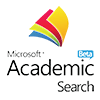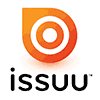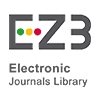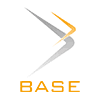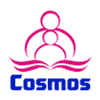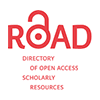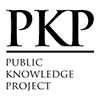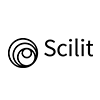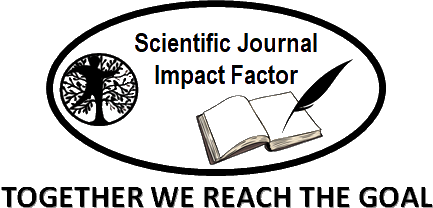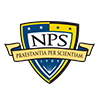The Effect of Interactive Learning Videos to Improve English Speaking and Writing Skills Among Grade 10 Students at Islamic High School MA Jihadul Ummah NW Waker
Abstract
Learning video is one of the qualified means in learning so that students do not feel bored in learning English, the presentation of this video provides motivation to students in learning English. The objectives in the study were to determine the effect of videos in interactive learning to improve English speaking skills in grade 10 students at ma jihadul ummah NW waker Central Lombok, and to determine the effect of videos in interactive learning to improve English writing skills in grade 10 students at ma jihadul ummah NW waker Central Lombok. This research will use quantitative research methods. The location of this research was conducted at the formal Islamic high school (MA Jihadul Ummah) Nahdlatul Wathan Waker which is located at Jl. Raden Puguh No.1, Puyung, Kec. Jonggat, Central Lombok Regency, West Nusa Tenggara the English speaking and writing skills of grade 10 students at islamic high school (MA Jihadul Ummah) NW Waker Central Lombok. This effect occurs both directly and indirectly through ability improvement as a mediating variable. With path coefficients of 0.286 for speaking and 0.261 for writing, as well as a highly significant p-value of 0.000, the results confirm the importance of learning media and students' internal processes in building a strong foundation of language skills.
Keywords
Full Text:
PDFReferences
Aizawa, I., Rose, H., Thompson, G., & Curle, S. (2023). Beyond the threshold: Exploring English language proficiency, linguistic challenges, and academic language skills of Japanese students in an English medium instruction programme. Language Teaching Research, 27(4), 837–861. https://doi.org/10.1177/1362168820965510
Andika, M. (2022). Peran Youtube Sebagai Inovasi Dalam Meningkatkan Motivasi Belajar Siswa Pada Kemampuan Speaking. Jurnal Educatio FKIP UNMA, 8(4), 1595–1600. https://doi.org/10.31949/educatio.v8i4.4044
Annamalai, N., Eltahir, M. E., Zyoud, S. H., Soundrarajan, D., Zakarneh, B., & Al Salhi, N. R. (2023). Exploring English language learning via Chabot: A case study from a self determination theory perspective. Computers and Education: Artificial Intelligence, 5(June), 100148. https://doi.org/10.1016/j.caeai.2023.100148
Arif, M. (2022). Pengaruh Pembuatan Video Untuk Meningkatkan Kemampuan Bicara Bahasa Inggris. MOTORIC (Media of Teaching Oriented and Children), 6(1), 335–343. http://orcid.org/0000-0003-4737-2058
Arma, I. P. (2024). Characters and Non-Digital Media: Case Study Trends in English Language Learning in Secondary Schools. Assyfa Journal of Multidisciplinary Education, 1(June), 95–103. https://www.journal.assyfa.com/index.php/ajme/article/view/352
Castillo-Cuesta, L. (2022). Using Genially Games for Enhancing EFL Reading and Writing Skills in Online Education. International Journal of Learning, Teaching and Educational Research, 21(1), 340–354. https://doi.org/10.26803/ijlter.21.1.19
Chauncey, S. A., & McKenna, H. P. (2023). A framework and exemplars for ethical and responsible use of AI Chatbot technology to support teaching and learning. Computers and Education: Artificial Intelligence, 5(October), 100182. https://doi.org/10.1016/j.caeai.2023.100182
Chotimah, C. (2022). the Use of Cake Application on Students’ Speaking Skill in English for Specific Purposes (Esp). Lingua, 18(1), 60–70. https://doi.org/10.34005/lingua.v18i01.1851
De Silva, R. (2015). Writing strategy instruction: Its impact on writing in a second language for academic purposes. Language Teaching Research, 19(3), 301–323. https://doi.org/10.1177/1362168814541738
De Silva, R., & Graham, S. (2015). The effects of strategy instruction on writing strategy use for students of different proficiency levels. System, 53, 47–59. https://doi.org/10.1016/j.system.2015.06.009
Elbes, E. K., & Oktaviani, L. (2022). Character Building in English for Daily Conversation Class Materials for English Education Freshmen Students. Journal of English Language Teaching and Learning, 3(1), 36–45. https://doi.org/10.33365/jeltl.v3i1.1714
Fathia Baresh, E. (2022). Developing Libyan Undergraduates’ Writing Skills Through Reflective Journaling: a Critical Literature Review. Journal of English Language Teaching and Learning, 3(1), 27–35. https://doi.org/10.33365/jeltl.v3i1.1835
Fauziyah, N. L., Widodo, J. P., & Yappi, S. N. (2022). The use of Canva for education’ and the students’ perceptions of its effectiveness in the writing procedure text. Budapest International Research and Critics Institute-Journal (BIRCI-Journal), 5(1), 6368–6377.
Firawati, O., Yolanda, A., & Kuswarini, P. (2023). Problematika Keterampilan Berbicara Dalam Bahasa Jerman Siswa Kelas Xi Sma Islam Al-Azhar 12 Makassar. Cetak) Journal of Innovation Research and Knowledge, 3(1), 4659–4664.
Fitria, T. N. (2022). Using Canva As Media for English Language Teaching (Elt) in Developing Creativity for Informatics Students’. ELT Echo : The Journal of English Language Teaching in Foreign Language Context, 7(1), 58. https://doi.org/10.24235/eltecho.v7i1.10789
Gayed, J. M., Carlon, M. K. J., Oriola, A. M., & Cross, J. S. (2022). Exploring an AI-based writing Assistant’s impact on English language learners. Computers and Education: Artificial Intelligence, 3(January), 100055. https://doi.org/10.1016/j.caeai.2022.100055
Han, S. (2022). Flipped classroom: Challenges and benefits of using social media in English language teaching and learning. Frontiers in Psychology, 13(September), 1–11. https://doi.org/10.3389/fpsyg.2022.996294
Hestiana, M., & Anita, A. (2022). the Role of Movie Subtitles To Improve Students’ Vocabulary. Journal of English Language Teaching and Learning, 3(1), 46–53. https://doi.org/10.33365/jeltl.v3i1.1715
Hidayat, Y., Herniawati, A., & Ihsanda, N. (2022). Use of Drilling Technique to Teach English Speaking to the Early Childhoods: A Descriptive Study. Journal Corner of Education, Linguistics, and Literature, 2(1), 73–80. https://doi.org/10.54012/jcell.v2i1.66
Kurniati, E. Y., & Fithriani, R. (2022). Post-Graduate Students’ Perceptions of Quillbot Utilization in English Academic Writing Class. Journal of English Language Teaching and Linguistics, 7(3), 437. https://doi.org/10.21462/jeltl.v7i3.852
Lin, P. (2022). Developing an intelligent tool for computer-assisted formulaic language learning from YouTube videos. ReCALL, 34(2), 185–200. https://doi.org/10.1017/S0958344021000252
Losi, R. V., & Muslim Nasution, M. (2022). Students’ Attitudes toward Communicative Language Teaching (CLT) in English Speaking Intensive Program. International Journal of English and Applied Linguistics (IJEAL), 2(1), 95–102. https://doi.org/10.47709/ijeal.v2i1.1428
Mahdi, D. A. (2022). Improving Speaking and Presentation Skills through Interactive Multimedia Environment for Non-Native Speakers of English. SAGE Open, 12(1). https://doi.org/10.1177/21582440221079811
Masruddin, M., & Nasriandi, N. (2022). Lexical and Syntactical Errors Performed by Junior High School Student in Writing Descriptive Text. IDEAS: Journal on English Language Teaching and Learning, Linguistics and Literature, 10(1), 1094–1100. https://doi.org/10.24256/ideas.v10i1.3024
Maulida, D. S., Rahman, M. A., Handrianto, C., & Rasool, S. (2022). A Review of the Blended Learning as the Model in Improving Students` Paragraph Writing Skills. Abjadia : International Journal of Education, 7(1), 59–72. https://doi.org/10.18860/abj.v7i1.15901
Mulyadi, Y., & Wikanengsih, W. (2022). Implementasi Keterampilan Berbahasa Memirsa Dalam Capaian Pembelajaran Kurikulum Prototipe Mata Pelajaran Bahasa Indonesia Kelas X Pada Program Sekolah Penggerak. Semantik, 11(1), 47–60. https://doi.org/10.22460/semantik.v11i1.p47-60
Muthmainnah, Cardoso, L., Obaid, A. J., Al Yakin, A., Jafar, M., & Nurlaila. (2022). Expanding on the Use of YouMiMe as Technology Instructional Design in Learning. Pegem Egitim ve Ogretim Dergisi, 13(1), 367–378. https://doi.org/10.47750/pegegog.13.01.40
Octavianita, A., Fitri, N. R., Rafinazly, R., & Ihsan, M. T. (2022). The Effectiveness of Using Cake Application in Improving Students Speaking Skills. AUFKLARUNG: Jurnal Kajian Bahasa, Sastra Indonesia, Dan Pembelajarannya, 1(2), 80–85.
Osakwe, I., Chen, G., Fan, Y., Rakovic, M., Li, X., Singh, S., Molenaar, I., Bannert, M., & Gašević, D. (2023). Reinforcement learning for automatic detection of effective strategies for self-regulated learning. Computers and Education: Artificial Intelligence, 5(October). https://doi.org/10.1016/j.caeai.2023.100181
Pang, S., Lai, S., Zhang, A., Yang, Y., & Sun, D. (2023). Graph convolutional network for automatic detection of teachers’ nonverbal behavior. Computers and Education: Artificial Intelligence, 5(152), 100174. https://doi.org/10.1016/j.caeai.2023.100174
Putri, E. (2022). An Impact of the Use Instagram Application Towards Students Vocabulary. Jurnal Ilmiah Pustaka Ilmu, 2(2), 1–10. http://pustakailmu.id/index.php/pustakailmu/article/view/88/77
Ritonga, M., Febriani, S. R., Kustati, M., Khaef, E., Ritonga, A. W., & Yasmar, R. (2022). Duolingo: An Arabic Speaking Skills’ Learning Platform for Andragogy Education. Education Research International, 2022. https://doi.org/10.1155/2022/7090752
Sadaf, H., Rasheed, B., & Ahmad, A. (2024). Exploring the Role of YouTube Lectures, Vlogs, and Videos in Enhancing ESL Learning. Journal of Asian Development Studies, 13(2), 657–670. https://doi.org/10.62345/jads.2024.13.2.52
Santos, R. M., & Henriques, R. (2023). Accurate, timely, and portable: Course-agnostic early prediction of student performance from LMS logs. Computers and Education: Artificial Intelligence, 5(June), 100175. https://doi.org/10.1016/j.caeai.2023.100175
Seyoum, W. M., Yigzaw, A., & Bewuketu, H. K. (2022). Students’ Attitudes and Problems on Question-Based Argumentative Essay Writing Instruction. Journal of English Language Teaching and Learning, 3(2), 58–63. https://doi.org/10.33365/jeltl.v3i2.2106
Shidik, R. R., Anggraeni, P., & Royani, N. (2022). Penggunaan Media Video Pembelajaran Untuk Meningkatkan Minat Dan Keterampilan Membaca Siswa Pada Materi Sumber Dan Bentuk Energi. Literat-Jurnal Pendidikan …, I(1), 91–99. https://ejournal.unsap.ac.id/index.php/literat/article/view/24%0Ahttps://ejournal.unsap.ac.id/index.php/literat/article/download/24/9
Srivani, V., Hariharasudan, A., Nawaz, N., & Ratajczak, S. (2022). Impact of Education 4.0 among engineering students for learning English language. PLoS ONE, 17(2 February), 1–12. https://doi.org/10.1371/journal.pone.0261717
Sulistiani, I. (2022). Penerapan Media Pembelajaran Berbasis Video Animasi Powtoon Untuk Meningkatkan Hasil Belajar Siswa Kelas XI Bahasa dan Sastra Inggris di SMA Negeri 1 Samarinda. BULLET : Jurnal Multidisplin Ilmu, 1(4), 630–637.
Sumiyati, S. (2022). Peningkatan Keterampilan Menulis Teks Prosedur Menggunakan Model Project Based Learning Dengan Bantuan Video Animasi. Bitnet: Jurnal Pendidikan Teknologi Informasi, 7(1), 16–21. https://doi.org/10.33084/bitnet.v7i1.3373
Suwanto, S. (2022). Meningkatkan Karakter Mandiri Melalui Video Pembelajaran sebagai Media Pembelajaran Jarak Jauh. Jurnal Didaktika Pendidikan Dasar, 6(3), 913–928. https://doi.org/10.26811/didaktika.v6i3.729
Toleuzhan, A., Sarzhanova, G., Romanenko, S., Uteubayeva, E., & Karbozova, G. (2023). The Educational Use of YouTube Videos in Communication Fluency Development in English: Digital Learning and Oral Skills in Secondary Education. International Journal of Education in Mathematics, Science and Technology, 11(1), 198–221. https://doi.org/10.46328/ijemst.2983
Tuncer, H., & Karataş, T. Ö. (2022). Recommendations of ELT Students for Four Language Skills Development: A Study on Emergency Distance Education During the COVID-19 Pandemic. SAGE Open, 12(1). https://doi.org/10.1177/21582440221079888
Verma, N., Getenet, D. S., Dann, D. C., & Shaik, T. (2023). Designing an artificial intelligence tool to understand student engagement based on teacher’s behaviours and movements in video conferencing. Computers and Education: Artificial Intelligence, 5(June), 100187. https://doi.org/10.1016/j.caeai.2023.100187
Windrawati, N. K. A. (2023). Upaya Meningkatkan Keterampilan Menulis Procedure Text Mata Pelajaran Bahasa Inggris melalui Model Mind Mapping Siswa Kelas IX.B SMP Negeri 6 Mataram. Anwarul, 3(2), 369–381. https://doi.org/10.58578/anwarul.v3i2.1089
Widari, N. N., Suryawardani, I. G. A. O., Rantau, I. K., & Wiranatha, A. S. (2020). The Roles of Farmers in the Development of Belimbing Village Agrotourism and Its Effect on Satisfaction and Loyalty of Tourists. E-Journal of Tourism, 7(1), 16. https://doi.org/10.24922/eot.v7i1.58219
Yu, Z., & Gao, M. (2022). Effects of Video Length on a Flipped English Classroom. SAGE Open, 12(1). https://doi.org/10.1177/21582440211068474
DOI: http://dx.doi.org/10.18415/ijmmu.v12i8.7038
Refbacks
- There are currently no refbacks.
Copyright (c) 2025 International Journal of Multicultural and Multireligious Understanding

This work is licensed under a Creative Commons Attribution-NonCommercial-NoDerivatives 4.0 International License.
https://ijmmu.com
editor@ijmmu.com
facebook.com/ijmmu
Copyright © 2014-2018 IJMMU. All rights reserved.









